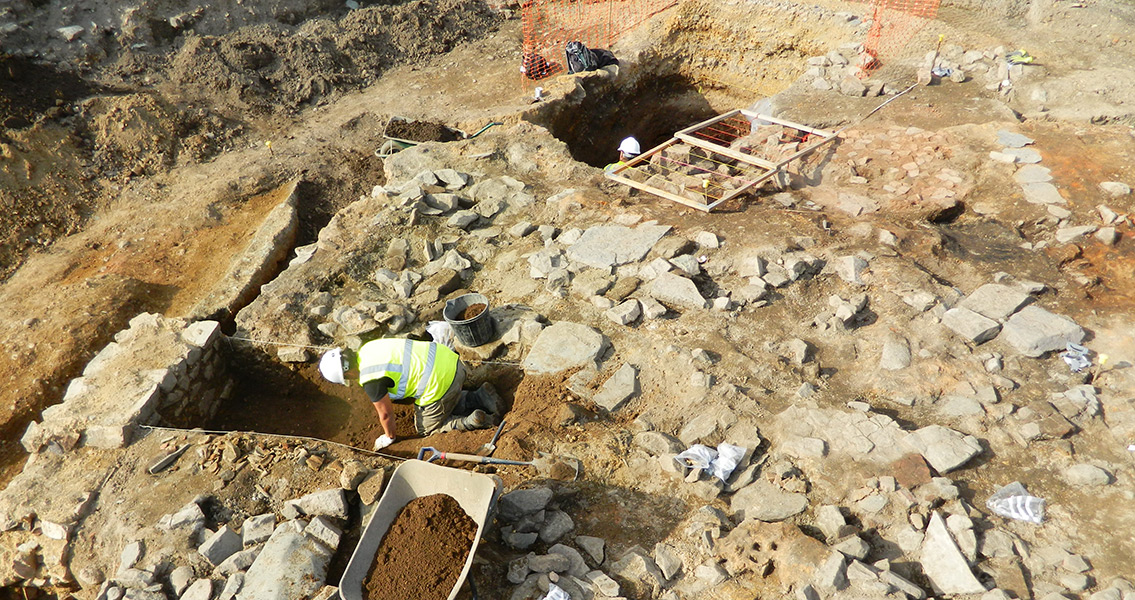<![CDATA[People have been using their backyards in pretty much the same way for hundreds of years, according to archaeologists with the University of Leicester Archaeological Services (ULAS) who are working on a dig in Leicester, England. While digging under an old bus depot in the center of town researchers have unearthed walls intended to keep the neighbors at bay, outhouses, garbage pits, wells and storage. The artifacts, which date back to a time between the twelfth and sixteenth centuries, were located in a dense urban area of houses and businesses. Once the artifacts were painstakingly removed and recorded, a picture of the city’s Roman past also began to reveal itself. They found that the backyards were covering the intersection of two Roman roads from the second-century, and that the roads were covered with arched gravel surfaces and included drainage ditches on both sides. The archaeologists also uncovered numerous timber and stone buildings dating from the second century to the fourth. According to the ULAD archaeologist leading the dig, John Thomas, experts expect the excavations to provide new and important insights concerning the settlement and the lifestyle of the people who lived in the town. The area of the find is in what’s referred to as the historic core of Leicester, where other important Medieval and Roman sites have been discovered. Public baths and a Roman plaza, or forum, were found down the road, and archaeologists unearthed skeletal remains in 2012 which were determined to belong to King Richard III at Greyfriars, an ancient Franciscan Friary and nearby site. A few of the ancient artifacts found beneath the old bus station in Leicester are in bad shape, but a lot of them have somehow remained intact. For example, archaeologists have discovered a length of mosaic pavement as well as a plaster wall which had been painted. A large number of smaller items have also been found, including a copper spoon, bone hairpins, pieces of jewelry, game counters and coins. These items suggest activities in the area were mainly domestic. This particular area of Roman Leicester is not well understood. The historical significance of the existing buildings prohibits extensive excavations so little archaeological investigation has been performed in this part of the city. For instance, one of the two Roman streets recently discovered on the site had never been seen before and wasn’t shown on any of the plans and drawings of Roman Leicester. According to Mathew Morris, an archaeologist with ULAS, the significance of these latest finds shouldn’t be underestimated because they raise new and exciting questions regarding how the early Romans laid out the town and how it changed throughout the Roman era. John Thomas and Mathew Morris are part of the archaeological team who undertake the job of investigating this section of Leicester prior to the start of any new construction project, because of its rich historical value. Image courtesy of University of Leicester]]>
New Excavation Finds Medieval Backyards Were Typical of Todays
